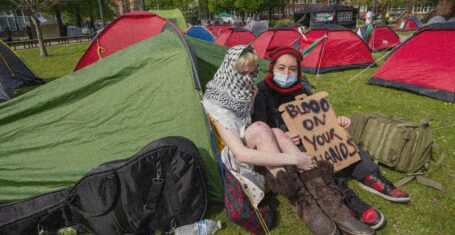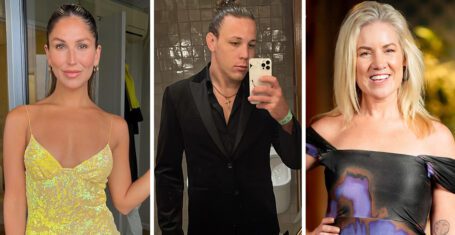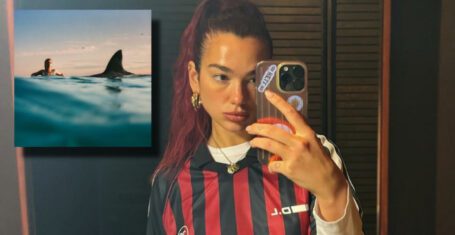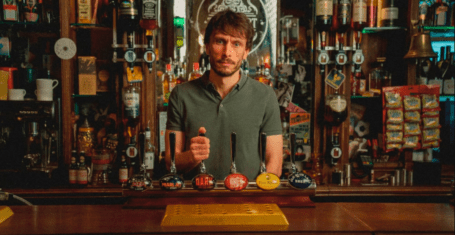
Ranked: How transparent fast fashion brands are about how their clothes are made
Unsurprisingly Boohoo is towards the bottom of the list
Earlier this week Boohoo faced criticism after it was alleged factory workers making clothes destined for the online retailer were paid £3.5o an hour. The exposé by The Sunday Times led many people on Instagram and Twitter to suggest we all “Boycott Boohoo”. Boohoo said they were “appalled” at the allegations and are ordering an independent review of their UK supply chain.
Boohoo, who also own PrettyLittleThing, Nasty Gal and Miss Pap, are just one of the many fast fashion companies that seem to give little away about how their clothes are actually made.
The Fashion Transparency Index run by the campaign group Fashion Revolution releases a yearly ranking of how transparent 250 fashion brands are. This review compares how much information luxury and high street fashion brands disclose about their environmental, ethical and operational policies. H&M was ranked number one on the index with Boohoo unsurprisingly coming very near the bottom of the list along with Fila.
The index covers five key areas on which companies can score points:
• Policy and commitments: This looks at brand’s social and environmental policies for their employees and those on the supply chain. It considers how these policies are implemented and how companies prioritise issues.
• Governance: This involves looking at who is on certain boards and what decisions they are making for social and environmental policies. The index also covers how easy it is for the public to contact the people making these important decisions.
• Traceability: This is all about how much of their supplier lists companies make available. From manufacturing, raw materials, to processing facilities.
• Know, Show & Fix: This is looking at how much brands disclose about how they assess problems and what they do to fix them.
• Spotlight Issues: The final section looks at what brands are doing to address issues such as gender inequality, climate change and forced labour.
Each fashion brand gets a score out of 250 which is then converted into a percentage. The higher the percentage the more transparent the company is about their practices.
The Fashion Index stresses it is not a shopping guide and should instead be used to hold companies accountable.
They said: “The Fashion Transparency Index is not an indication of whether particular brands are ‘good’ or ‘bad’. The purpose is to understand how much social and environmental information is shared by the world’s largest brands, to drive greater disclosure from them and to use this information to hold them to account when needed.”
However, there’s no denying that some fashion brands come out looking better than others for disclosing more policy information. This is how the fast fashion brands we all shop at compare for transparency:
H&M Group – H&M, Weekday, & Other Stories, Arket and Monki
Overall score: 73 per cent
The H&M group which includes brands such as Weekday, Monki and & Other Stories, topped the list of 250 brands and is the only company to score over 70 per cent.
They scored 91 per cent on Policy and Commitments which covers areas such as child labour, discrimination, equal pay and working hours.
This is the first year H&M have disclosed their raw materials and they also publish a list “of all its manufacturers and many of its processing facilities and fabric mills.”
And for the second year in a row H&M have scored the highest for disclosing information about Spotlight Issues which covers environmental and ethical problems.
Adidas
Overall score: 69 per cent
The Adidas group which includes Adidas and Reebok was ranked in the second highest tier group for transparency. And they received a score of 99 per cent in Policy and Commitments.
According to The Fashion Index: “This means they are publishing all the relevant social and environmental policies and procedures we look at, as well as materiality assessments and goals for improving impacts.”
The index also looked into how the annual product volume of companies and the Adidas group produced 866 million products during the reporting period.
North Face
Overall score: 59 per cent
This one is for the posh girls, who wouldn’t be seen dead without their North Face puffer jacket. North Face was ranked in the third tier and is one of the highest ranked brands for traceability.
According to the index: “This means that they are likely to be publishing detailed supplier lists at the first tier and beyond, as well as mapping at least one full raw material supply chain.”
ASOS
Overall score: 55 per cent
Everyone’s go to place for their wardrobe was ranked in a mid tier position overall. ASOS received one of the higher scores of the 250 brands for Traceability getting 66 per cent.
ASOS also did reasonably well in the Policy and Commitments section with a score of 79 per cent.
Inditex group – Bershka, Pull and Bear, Stradivarius and Zara
Overall score: 44 per cent
Interestingly whilst the other three brands had a score of 44 per cent, Zara received one of 43 per cent despite all brands being under the same group.
The Inditex group’s brands received their highest score in the Policy and Commitments section but their lowest in Traceability where they only received 19 per cent.
In the annual production volume ranking the group made 1.6 billion items of apparel.
Primark
Overall score: 38 per cent
Just how transparent is the shop you can buy a thong for £1? Primark received quite a low score of 23 per cent in the Traceability sector but was ranked one of the top brands in the Know, Show and Fix category.
Topshop
https://www.instagram.com/p/CB3gt6BJEUL/
Overall score: 38 per cent
Topshop and Topman are in joint position with Primark. This is the first year that Topshop disclosed some of their processing facilities.
Their highest score came from the Policy and Commitment section in which they were given a score of 67 per cent.
Urban Outfitters
Overall score: 20 per cent
The “edgy” girls’ favourite Urban Outfitters was not ranked very high on the index. This was the first year they had disclosed their first tier manufacturers and some of their processing facilities for the first time.
They were given zero per cent for the Governance category which looks at how accessible team members such as the sustainability board are for the public to get in contact with.
Urban Outfitters was only given a score of six per cent for Spotlight Issues which looks at how transparent companies’ are in addressing ethical and environmental issues.
Boohoo and Pretty Little Thing
https://www.instagram.com/p/CCYBUlQDN8p/
Overall score: Nine per cent
After the recent allegations is it any wonder the Boohoo group is so far down this list? Boohoo and PrettyLittleThing both got a score of 0 per cent for traceability – the section which covers how much companies’ disclose of their suppliers’ list which covers manufacturing.
The highest score for both brands was in the Policy and Commitments category in which they were both given 26 per cent.
Fila
Overall score: Eight per cent
There were in fact many other companies that received an even lower score than Boohoo and that included Fila. They equally received zero per cent in the Traceability category.
Fila was marked with four per cent for the Spotlight Issues section which looks at how transparent brands are in addressing environmental and ethical issues.
Featured image credit before edits: Paweł Czerwiński on Unsplash
Related stories recommended by this writer:
•Boohoo has been dropped by ASOS over exploitation claims
•People call for Boohoo boycott after it’s claimed factory workers are paid £3.50 an hour
•‘Whose hand is that colour?’: PLT gets backlash for black hand illustration





















